Abstract
Eight cesarean-derived goat kids were inoculated with caprine arthritis-encephalitis virus (CAEV), and proliferative responses of their peripheral blood mononuclear cells to mitogens and CAEV antigen were monitored for 9 months. Antibody specific for CAEV was measured by an enzyme-linked immunosorbent assay. Five cesarean-derived noninfected goats were tested simultaneously. Significant differences between the infected and control mononuclear cell proliferation reactions to CAEV began 14 days post-inoculation and continued in a fluctuant manner until 134 days post-inoculation. The magnitude of the proliferative reaction steadily increased in infected goats until the end of the experiment at 271 days post-inoculation. Responses to mitogens were not significantly different between infected and control goats. Virus-inoculated goats produced CAEV-specific antibody that reached a maximum level between 49 and 77 days post-inoculation and then declined to lower levels through 271 days post-inoculation. The virus-inoculated goats developed mild but characteristic clinical evidence of caprine arthritis-encephalitis, and CAEV was reisolated from four goats at 286 days post-inoculation. The five control goats developed neither an anti-CAEV immune response nor clinical disease, and CAEV could not be reisolated from them.
Full text
PDF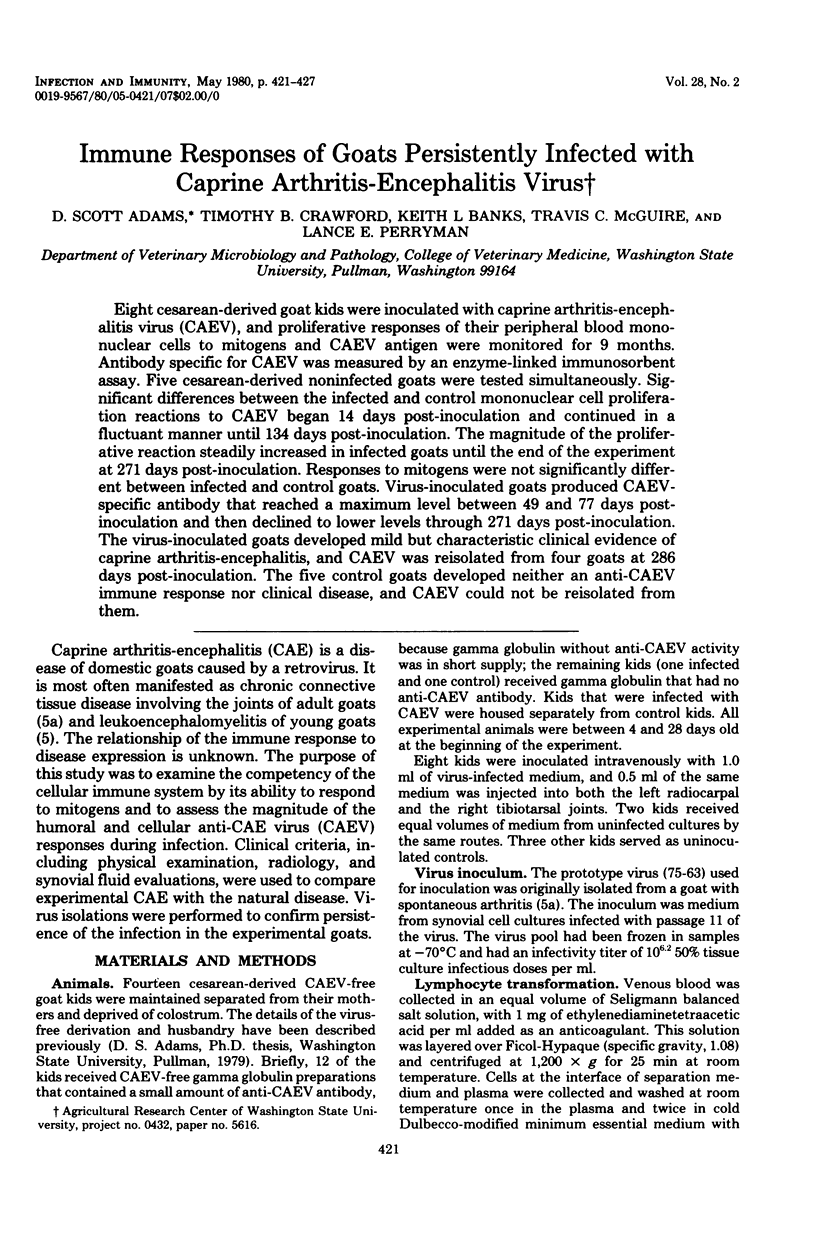
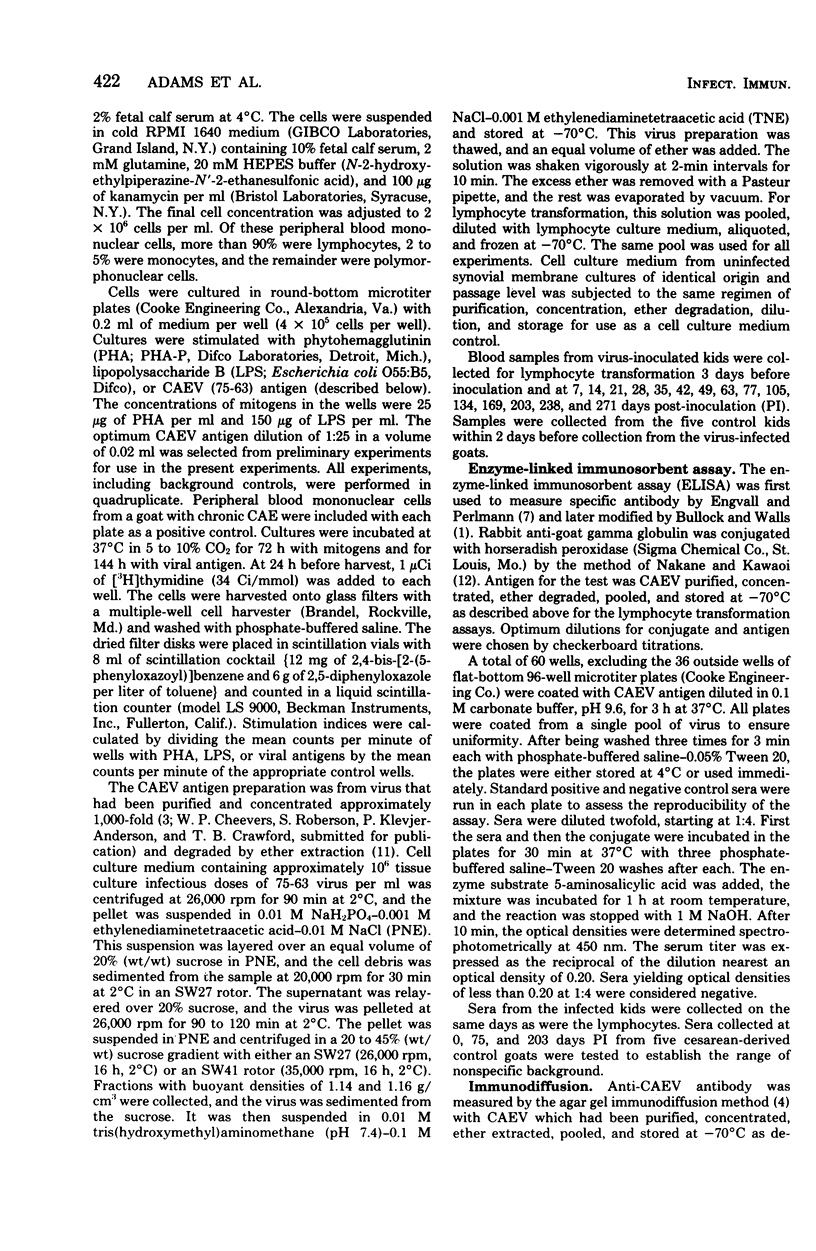
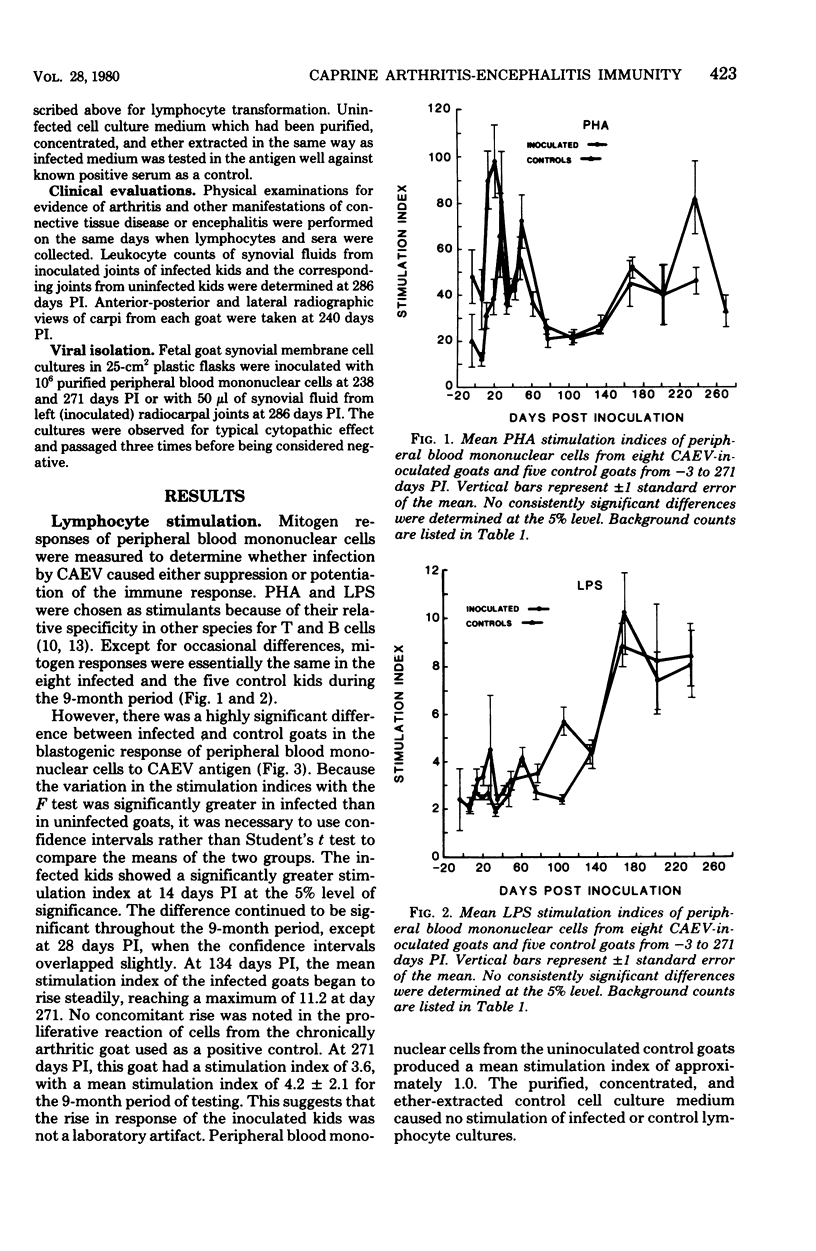
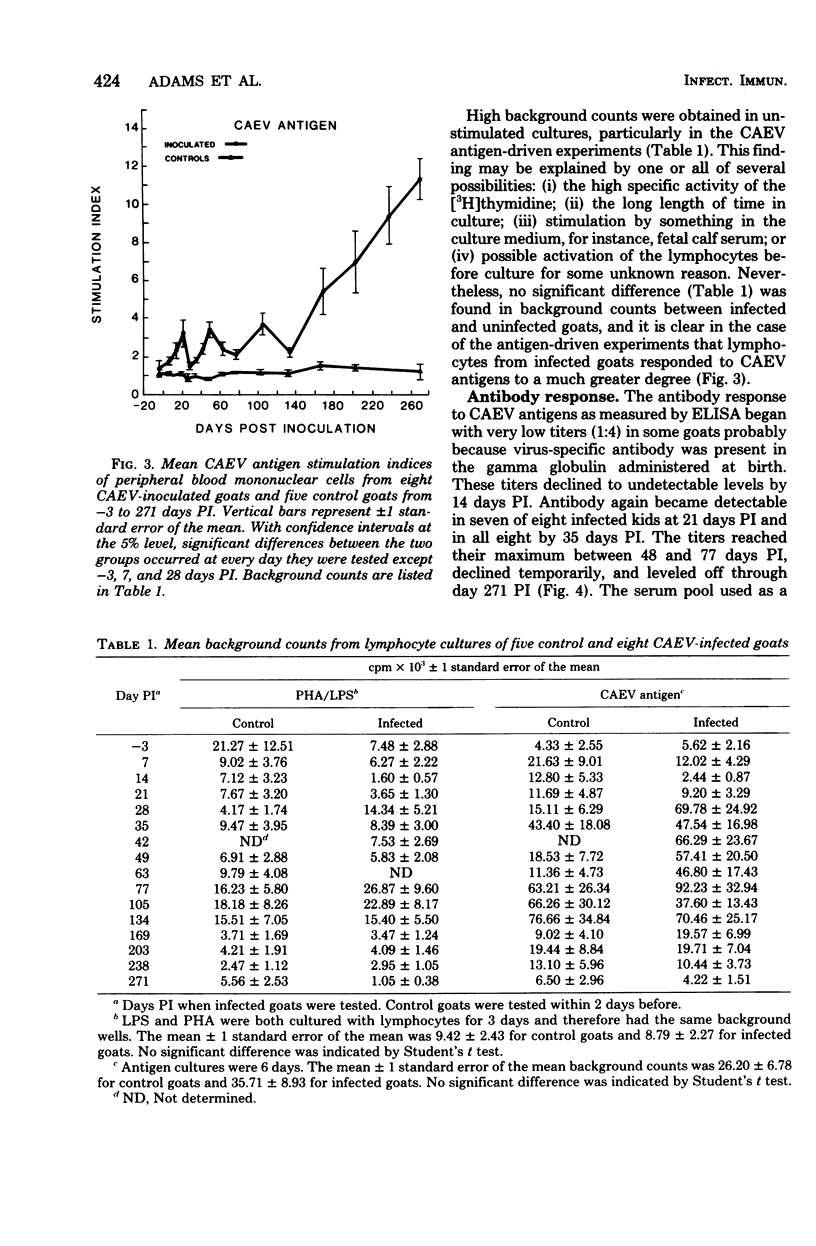
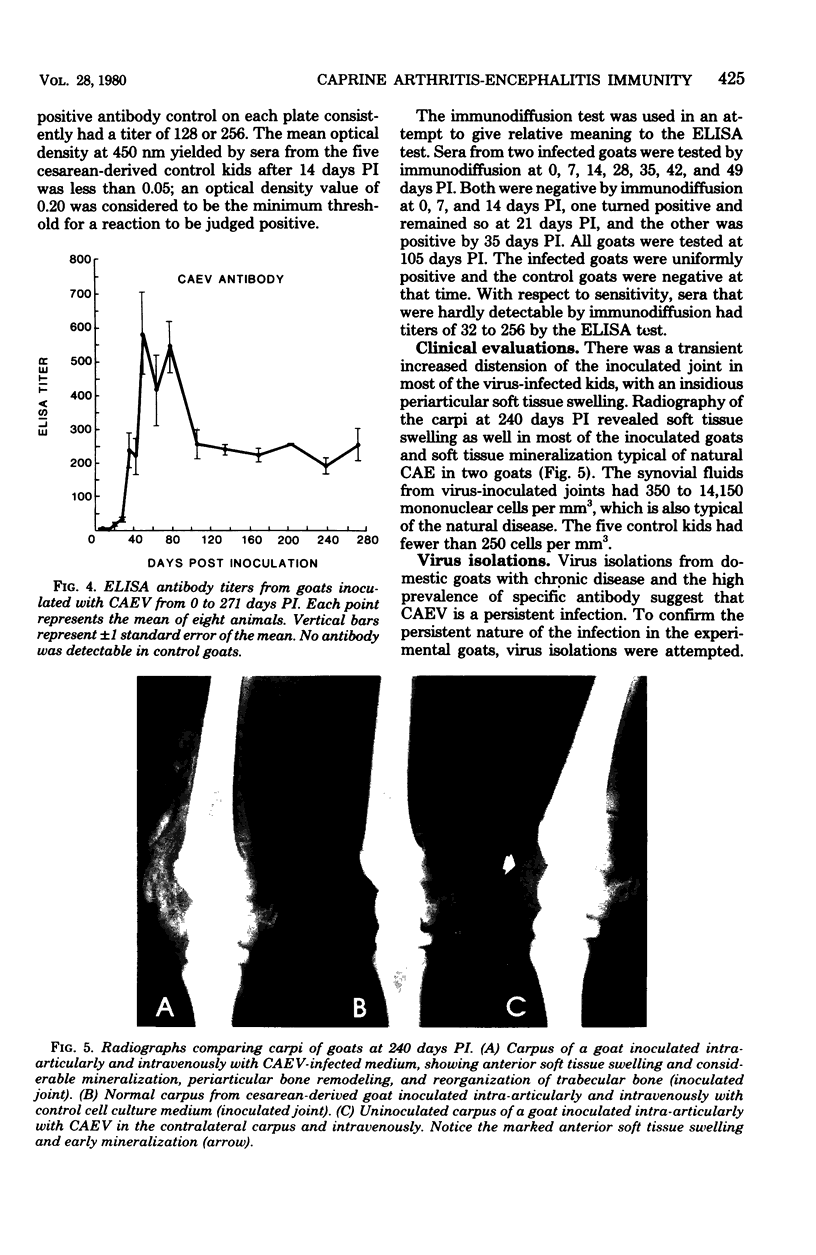
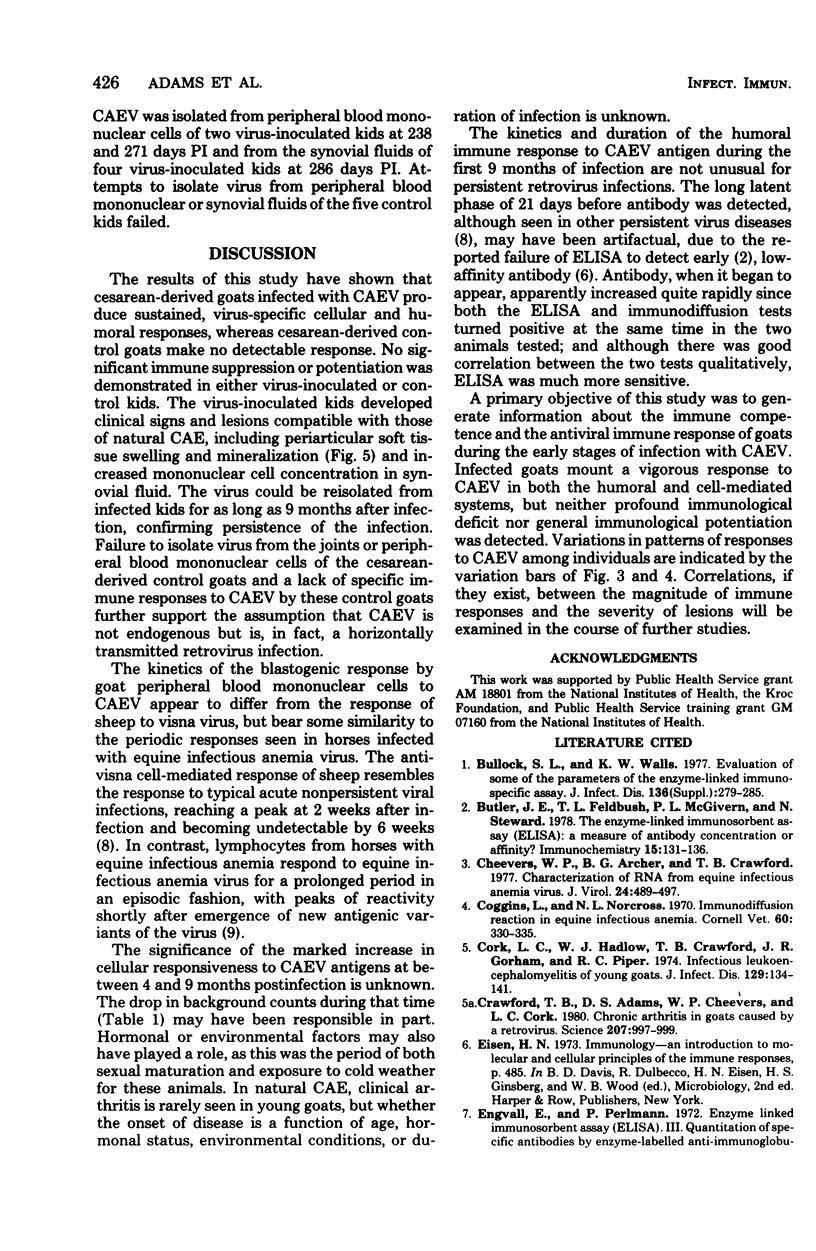
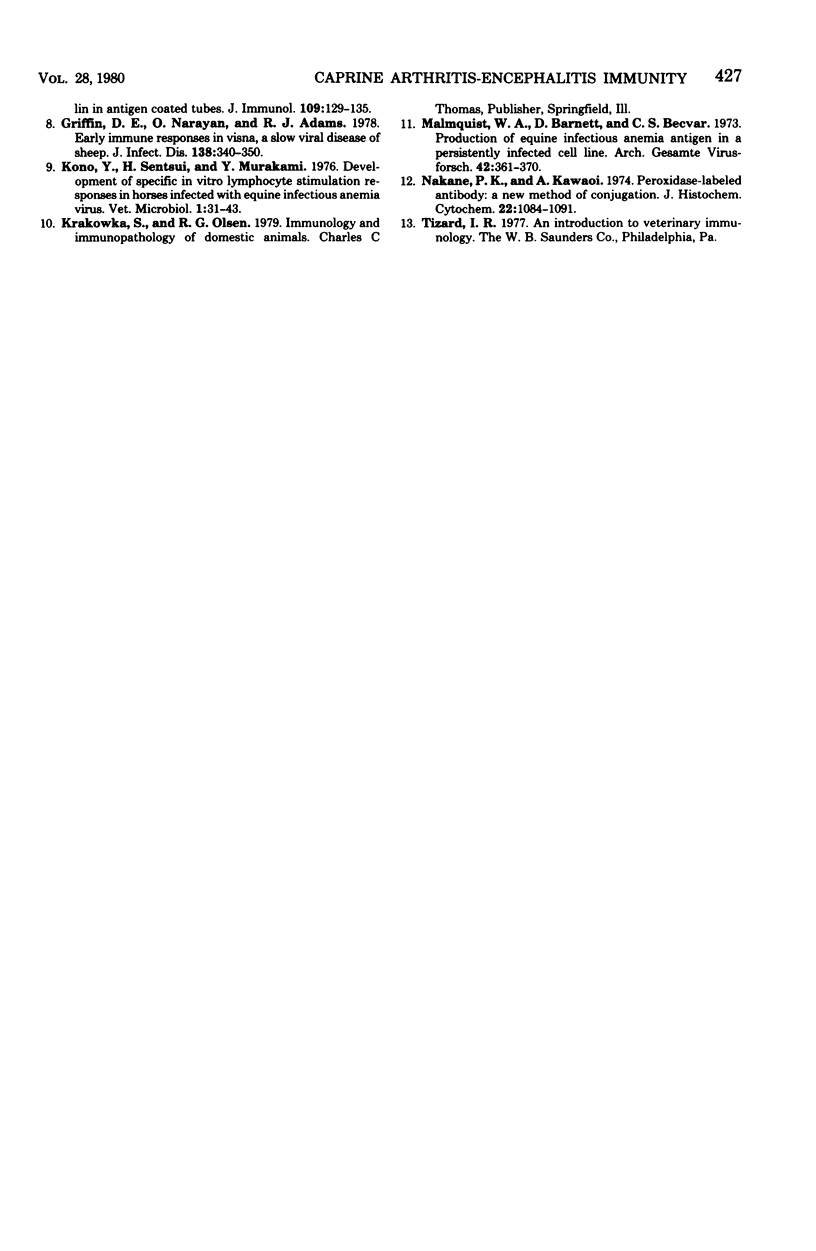
Images in this article
Selected References
These references are in PubMed. This may not be the complete list of references from this article.
- Butler J. E., Feldbush T. L., McGivern P. L., Stewart N. The enzyme-linked immunosorbent assay (ELISA): a measure of antibody concentration or affinity. Immunochemistry. 1978 Feb;15(2):131–136. doi: 10.1016/0161-5890(78)90053-6. [DOI] [PubMed] [Google Scholar]
- Cheevers W. P., Archer B. G., Crawford T. B. Characterization of RNA from equine infectious anemia virus. J Virol. 1977 Nov;24(2):489–497. doi: 10.1128/jvi.24.2.489-497.1977. [DOI] [PMC free article] [PubMed] [Google Scholar]
- Coggins L., Norcross N. L. Immunodiffusion reaction in equine infectious anemia. Cornell Vet. 1970 Apr;60(2):330–335. [PubMed] [Google Scholar]
- Cork L. C., Hadlow W. J., Crawford T. B., Gorham J. R., Piper R. C. Infectious leukoencephalomyelitis of young goats. J Infect Dis. 1974 Feb;129(2):134–141. doi: 10.1093/infdis/129.2.134. [DOI] [PubMed] [Google Scholar]
- Crawford T. B., Adams D. S., Cheevers W. P., Cork L. C. Chronic arthritis in goats caused by a retrovirus. Science. 1980 Feb 29;207(4434):997–999. doi: 10.1126/science.6153243. [DOI] [PubMed] [Google Scholar]
- Engvall E., Perlmann P. Enzyme-linked immunosorbent assay, Elisa. 3. Quantitation of specific antibodies by enzyme-labeled anti-immunoglobulin in antigen-coated tubes. J Immunol. 1972 Jul;109(1):129–135. [PubMed] [Google Scholar]
- Griffin D. E., Narayan O., Adams R. J. Early immune responses in visna, a slow viral disease of sheep. J Infect Dis. 1978 Sep;138(3):340–350. doi: 10.1093/infdis/138.3.340. [DOI] [PubMed] [Google Scholar]
- Malmquist W. A., Barnett D., Becvar C. S. Production of equine infectious anemia antigen in a persistently infected cell line. Arch Gesamte Virusforsch. 1973;42(4):361–370. doi: 10.1007/BF01250717. [DOI] [PubMed] [Google Scholar]
- Nakane P. K., Kawaoi A. Peroxidase-labeled antibody. A new method of conjugation. J Histochem Cytochem. 1974 Dec;22(12):1084–1091. doi: 10.1177/22.12.1084. [DOI] [PubMed] [Google Scholar]



